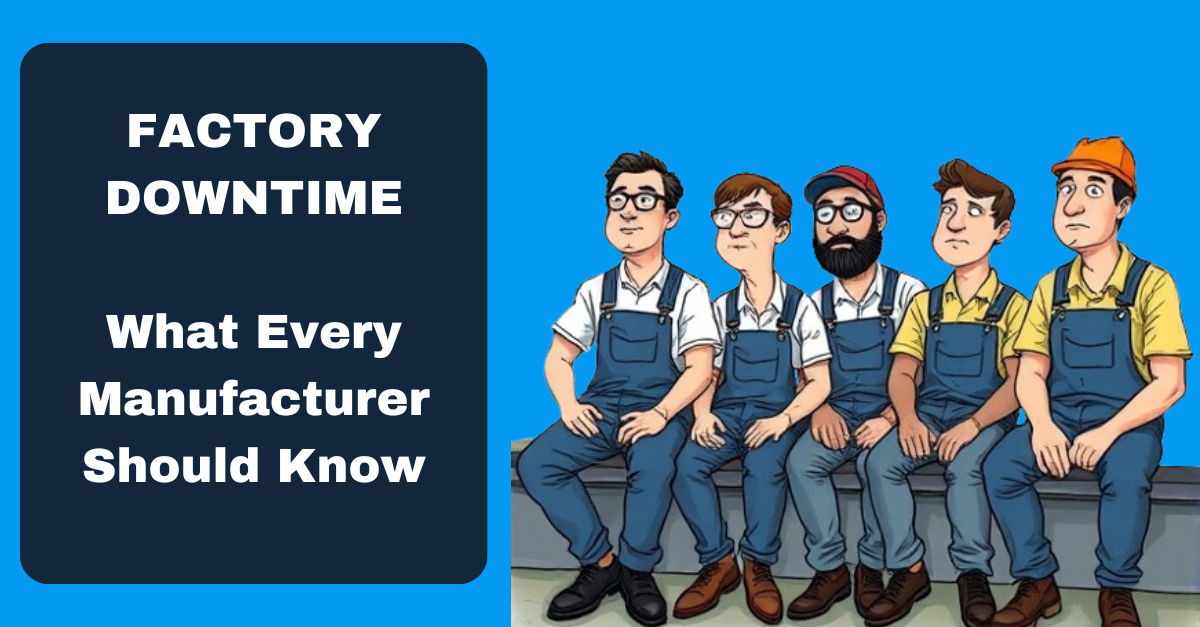Downtime is one of those sneaky challenges that can drain a factory’s efficiency and profits faster than you think. It’s simple: when machines stop, production stops, and that costs you money. But the impact of downtime goes beyond just lost output. It disrupts workflows, frustrates teams, and, if it happens too often, can even damage customer relationships.
If you’re running a factory floor, you know it’s not if downtime will happen, but when. The key is understanding what causes it, what it’s really costing you, and how to prevent it as much as possible.
What Causes Downtime?
Not all downtime looks the same. It can be as sudden as a machine breaking down mid-shift, or as predictable as a scheduled maintenance check.
Here’s where it usually comes from:
- Equipment Failure: Machines wear down. Parts break. Without a solid maintenance plan, unexpected stoppages can become routine.
- Lack of Materials: No raw materials? No production. Poor inventory management can leave you stuck waiting for the next delivery.
- Human Errors: Miscommunication or mistakes on the floor can grind operations to a halt.
- System Failures: Downtime isn’t just physical—software issues or outdated systems can be just as disruptive.
- Inefficient Processes: Bottlenecks, unclear workflows, and slow changeovers mean machines aren’t running when they should be.
No matter the cause, downtime costs you in more ways than one.
The Hidden Costs of Downtime
The financial hit is obvious. If your factory produces 1,000 units per hour, and downtime stops production for just one hour, you’ve lost 1,000 units. Multiply that by your unit cost, and the number gets uncomfortable fast.
But that’s just the start. Downtime has a ripple effect across your operations:
- Delayed Orders: Customers expect reliability. Downtime makes it harder to deliver on time, which can hurt trust and future business.
- Higher Repair Costs: Reactive fixes on broken machines are far more expensive than regular maintenance.
- Idle Teams: Workers standing around waiting for machines to start again are still on the clock.
- Stress and Overtime: Recovering from downtime often means longer shifts and rushed schedules—leading to burnout and mistakes.
Downtime might feel like a small hiccup in the moment, but over time, it adds up to lost opportunities and eroded margins.
How to Minimize Downtime
Here’s the good news: downtime isn’t unbeatable. With the right tools and strategies, you can reduce it—and sometimes even eliminate it entirely.
- Predictive Maintenance: Instead of waiting for something to break, use data to spot problems early. Modern systems with IoT sensors or built-in reporting can flag when a machine needs attention before it causes a full stop.
- Smarter Inventory Management: If materials are constantly running out, it’s time for better systems. An inventory or operations management system (OMS) helps you track stock levels, automate reorders, and ensure production doesn’t pause because of missing parts.
- Streamlined Processes: Downtime thrives in inefficient workflows. Look for ways to optimize processes—whether it’s faster changeovers, clearer communication, or automating repetitive tasks.
- Invest in Training: Sometimes, it’s not the machines, it’s the processes. Well-trained teams can troubleshoot issues faster and spot potential downtime risks before they escalate.
- Technology Solutions: From real-time machine monitoring to automated production planning, tools like ERPs and OMS platforms give you visibility into the factory floor. That visibility is the first step toward solving problems faster.
Turning Downtime Into Uptime
Downtime might be unavoidable, but it doesn’t have to control your operations. By identifying the root causes, understanding the costs, and investing in smarter solutions, you can minimize downtime, improve efficiency, and keep production humming along.
A reliable factory floor isn’t just good for business—it’s good for your team, your customers, and your bottom line.










